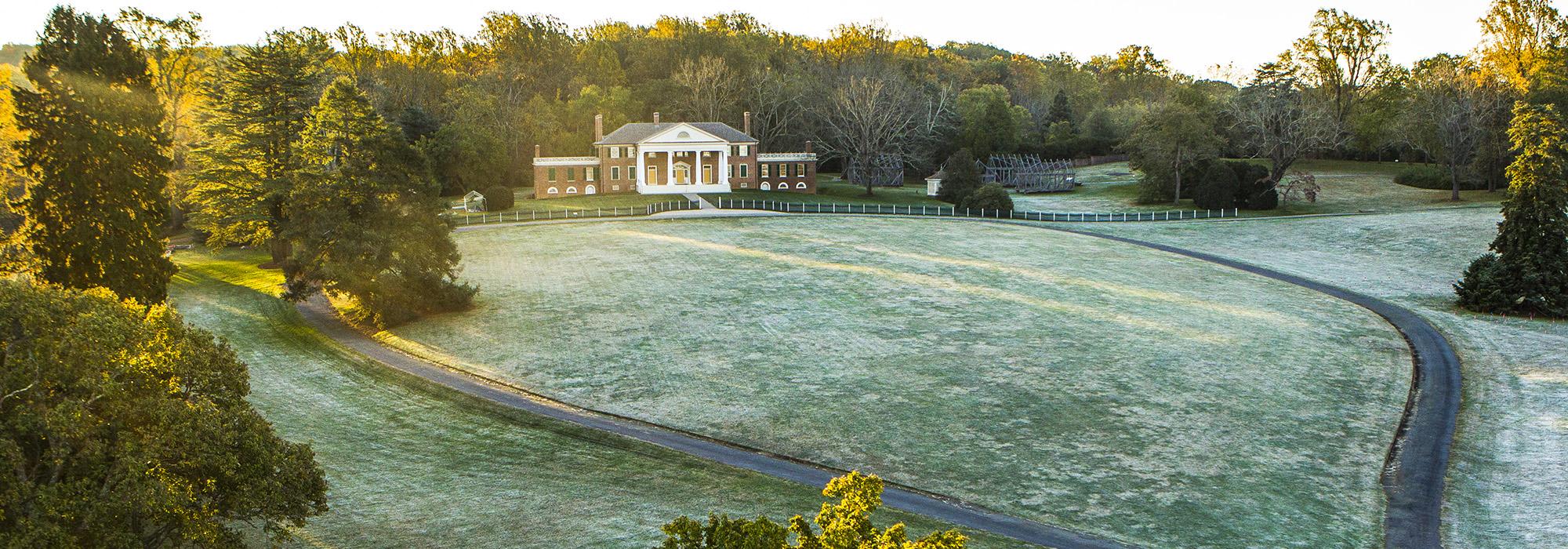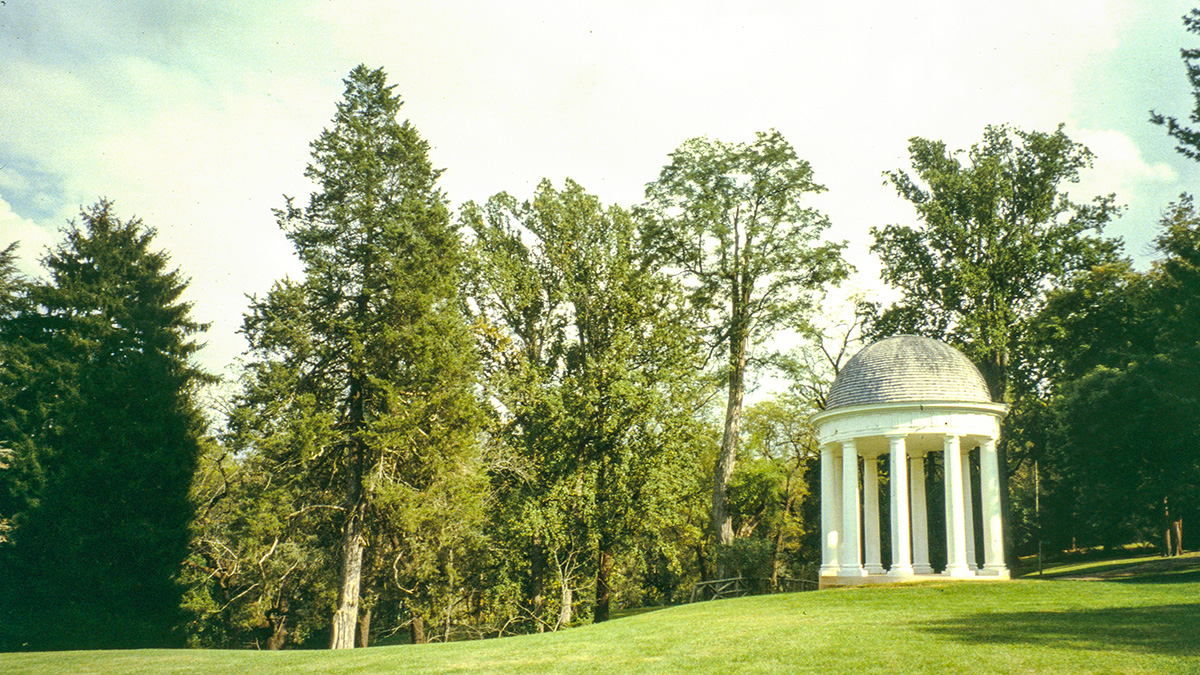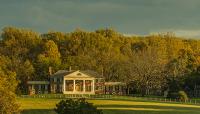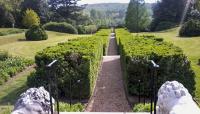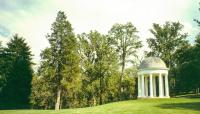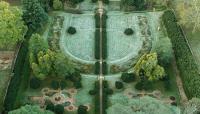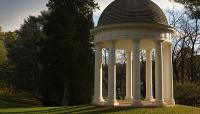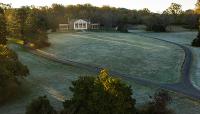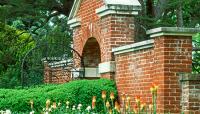Landscape Information
Built in 1763 on 4,500 acres of gently-rolling, wooded land in central Virginia, James Madison’s Montpelier was a working plantation with a formal landscape centered on the Federalist style mansion. The landscape around the mansion echoes English park traditions, with broad expanses of lawn, native trees and sweeping mountain vistas. Behind the house, the family’s French gardener designed a four-acre garden with vegetables, fruit trees, flowers, and shrubs. Madison also introduced black walnuts, tulip trees, and a large Cedar of Lebanon, which marks the entrance to the present formal garden.
In 1901 Montpelier was bought by industrialist William duPont, who expanded the mansion and altered the landscape’s arrival experience introducing a circular drive and double rows of boxwood, exotic trees, ornamental shrubs, and planting beds. A two-acre Colonial Revival-style garden was introduced atop the original formal garden, enclosed by a brick wall and featuring a strong central axis along a gravel walk. Outdoor rooms with medieval spolia radiated off the axis, including symmetrical herb gardens and terraced parterres. Charles Gillette inserted perennial beds in the 1920s. Equestrian elements, including barns, paddocks, and a racecourse were later added.
Montpelier was bequeathed to the National Trust for Historic Preservation in 1984. Today it comprises 2,650 acres, including over 200 acres of old growth forest. In 2003 to 2008, the National Trust returned the house to its Madison-era appearance, and the Garden Club of Virginia restored parts of the formal garden in 1992 and 2008 to 2009. Since the 1990s, on-site archeologists and interpreters have informed the public about recent project work. Beginning in 2016, historic dwellings of enslaved African Americans employed in domestic duties were reconstructed in the South Yard, directly adjacent to the mansion The identities of the upwards of 300 enslaved laborers who lived and worked on the estate are documented in The Naming Project, produced by the Montpelier Foundation. The site was designated a National Historic Landmark in 1960 and listed in the National Register of Historic Places in 1966.



